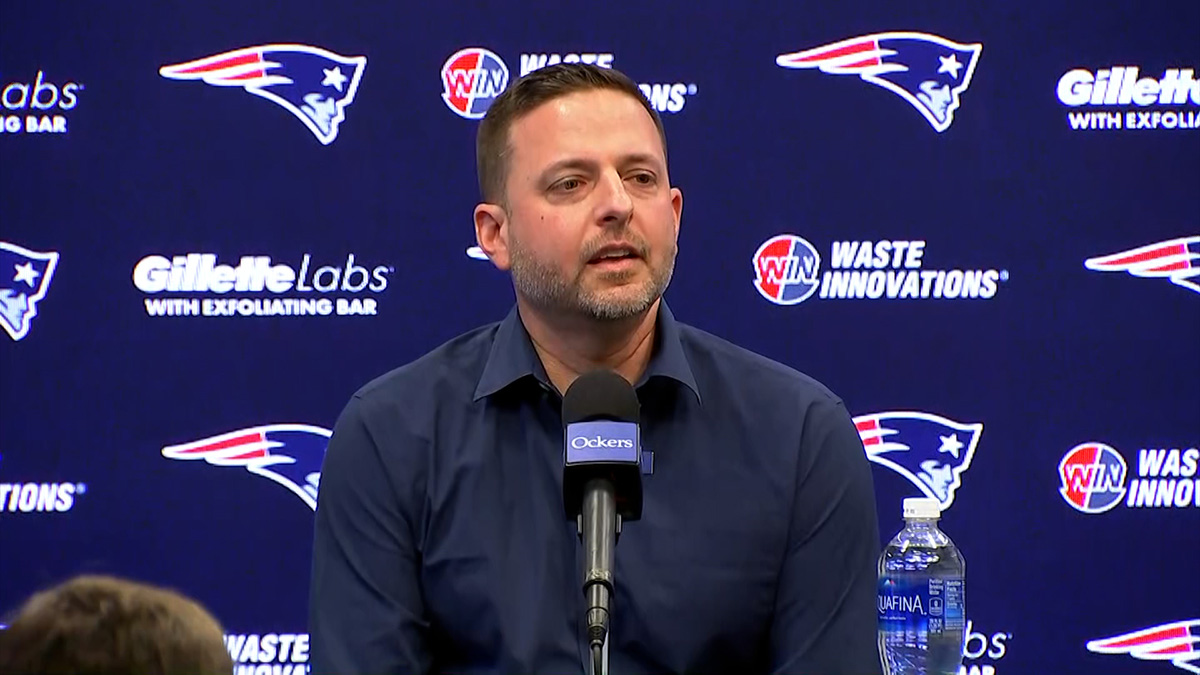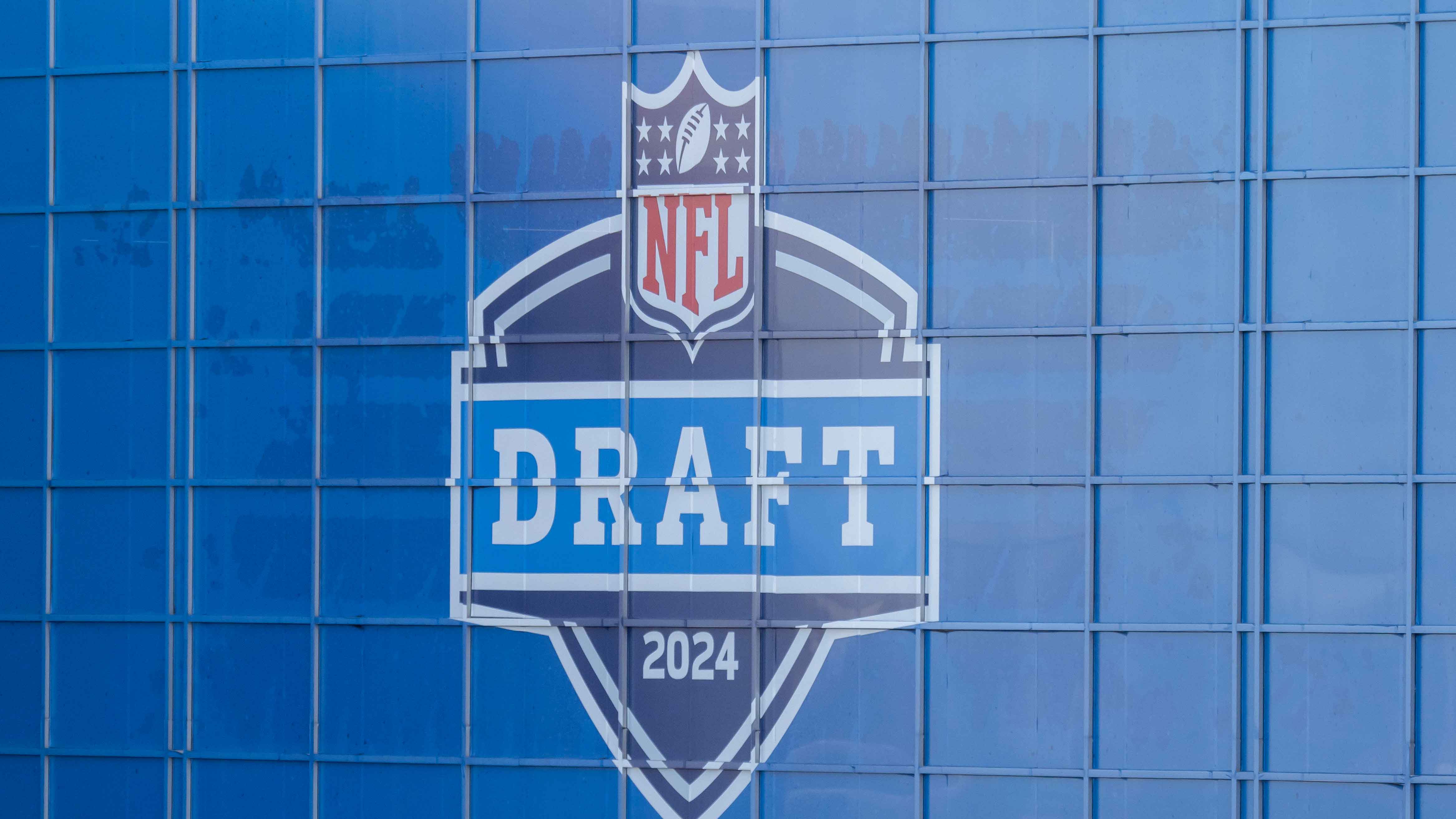With the NFL draft concluding, it's time for everyone to hand out their grades.
Except me.
I've never understood the idea behind grades immediately following the draft. So here's a little background on each pick, how they fit the Eagles and my take on the player.
Derek Barnett, DE, Tennessee, first round, No. 14 overall
Barnett broke Reggie White's sack record at Tennessee (33). His 52 tackles for loss are the second-most in SEC history. Barnett isn't the same kind of supernatural prospect White was, but he has a high motor, violent hands and a great attitude.
How he fits: The Eagles' pass rush was almost nonexistent toward the end of last season. Barnett adds to the rotation of Brandon Graham, Vinny Curry and newcomer Chris Long. Graham is coming off a terrific season, while Curry was disappointing. Long will help, but he's also 32 years old. Barnett makes the unit deeper and younger.
Jim Schwartz's defense is predicated on getting pressure with his front four. He also prefers to use a rotation. Barnett now gives the Eagles four options. Some were disappointed by this pick, but they shouldn't be. Barnett fits this scheme perfectly and at just 20 (he'll turn 21 in June), has time to develop even more.
Analysis: I correctly predicted this pick. I just love Barnett's motor and natural bend around the edge. I also love his demeanor. He's got a quiet confidence about him. The quotes from his college position coach are pretty awesome (see story).
NFL
Sidney Jones, CB, Washington, second round, No. 43 overall
If not for a ruptured Achilles suffered during his pro day, the Eagles would've been looking at Jones at No. 14. He was the best player in a fantastic secondary at Washington, accumulating eight interceptions and 21 passes defensed in 40 career games.
How he fits: For this season, he may not fit at all. At one time, Jones was optimistic that he'd play this season, but the earliest he could return is October. It's hard to imagine Jones being able to play at a high level after missing all of OTAs and training camp and then the first three games of the regular season. Then again, you never know.
Analysis: Before the injury, I had Jones as the No. 1 corner in this draft, ahead of Ohio State's Marshon Lattimore. While Lattimore's size and speed fit the prototype, Jones had the best tape of any corner. He's smooth, he can press, he can play off, he can play man or zone, he tracks the ball extremely well and has ball skills. You might have to wait a year, but you might have yourself a true shutdown corner.
Rasul Douglas, CB, West Virginia, third round, No. 99 overall
Douglas was a JUCO transfer who didn't see the field much in his first year at West Virginia. During his senior season, Douglas was crazy productive, leading the nation with eight interceptions. At 6-foot-2, he's the tallest corner on the Eagles' roster.
How he fits: Schwartz needs his corners to be able to press. Knocking receivers off their routes allows another second for the pass rush to get home. Douglas didn't press much at West Virginia, but he has the length and the traits that make you think he's capable. Given the current cornerback depth chart, Douglas will get every chance to play during his rookie season.
Analysis: The one thing it seems like Joe Douglas has brought to the table is a desire to take players with great production at the college level. Douglas had a tough upbringing and had to work his butt off to get to West Virginia (see story). I didn't love the pick (Iowa defensive tackle Jaleel Johnson was the one player I would've looked at). There are times when Douglas looks lost on tape. But the production and physical traits are there in spades.
Mack Hollins, WR, North Carolina, fourth round, No. 118 overall
Hollins is interesting both as a player and a human being (see story). He was a big-play threat for North Carolina. Twenty of his 81 career catches were touchdowns and he averaged 20.6 yards a catch. A broken collarbone cut Hollins' season to just seven games in 2016.
How he fits: A lot has been made of Hollins' contributions as a special teamer, but he brings much more to the table. He has tremendous size (6-4) and good speed along with it. This pick spells trouble for Dorial Greem-Beckham.
Analysis: For a tall, long receiver, Hollins is fairly smooth. That leads me to believe there is more potential there to become a complete receiver. He'll have time to develop behind Alshon Jeffery, Torrey Smith and Jordan Matthews. Perhaps the Eagles could've snagged BYU running back Jamaal Williams, but Hollins was a fine pick.
Donnel Pumphrey, RB, San Diego State, 4th round, No. 132 overall
Pumphrey's size won't blow you away (5-8, 176 pounds), but his production was huge. Pumphrey leaves college as the NCAA's third-highest rusher of all time. In 2016, Pumphrey led the nation with 2,133 yards on an NCAA-leading 349 carries.
How he fits: Pumphrey is an undersized, Swiss army knife back who has and will continue to get compared to Darren Sproles (see story). Sproles has said it'll be his final season, so hopefully Pumphrey can soak up the veteran's knowledge. Pumphrey will get plenty of opportunities this season with Sproles and Wendell Smallwood also in the mix.
Analysis: I question this pick because of the Eagles' need for a bigger back. The questioning has nothing to do with the player that Pumphrey is. He has unbelievably quick feet, great vision and is versatile. It'll be interesting to see how they use Pumphrey in Year 1.
Shelton Gibson, WR, West Virginia, fifth round, No. 166 overall
Like Hollins, Gibson gained a reputation as a big-play threat. He led the Big 12 in yards per catch the last two seasons (24, 22.1) and caught 17 touchdowns the last two seasons combined. He also has skills as a kick returner, averaging 23.5 yards per return and taking one to the house.
How he fits: The Eagles were obviously unhappy with the receiver position last season. Howie Roseman went out and signed veterans in Jeffery and Smith. On draft weekend, he added two more young pass catchers. Roseman said that Gibson just happened to be the best player on the board and the team wasn't necessarily looking to add another receiver. Haven't decided if I'm buying that or not.
Analysis: Gibson was a serious deep threat at West Virginia. He ran a bad 40 for a player under 6-foot that's game is predicated on speed (4.50). But he ran a combine-best 60-yard shuttle (10.71) which shows his explosiveness and ability to accelerate without much build up. The tape shows serious speed. This kid can fly.
Nathan Gerry, S/LB, Nebraska, fifth round, No. 184 overall
Gerry is a hard-hitting safety that displayed impressive ball skills. He picked off 13 passes during his time at Nebraska. He was deemed academically ineligible for the Cornhuskers' bowl game, which may have scared some teams off.
How he fits: Gerry played safety during his time at Nebraska, but when the Eagles drafted him, they announced him as a linebacker (see story). At 218 pounds, he's a little undersized for the position. He'll likely spend a lot of time on special teams. He's an aggressive and passionate player, so he should excel in that capacity.
Analysis: This pick made me scratch my head at first. When I watched Gerry as a safety, I saw a special teams player that likes to hit. Projecting him as a linebacker is a little different. For a linebacker, his coverage and ball skills are excellent. Hybrids have been all the rage and it's a copycat league. Maybe Schwartz sees a role as a hybrid linebacker-safety for Gerry.
Elijah Qualls, DT, Washington, sixth round, No. 214 overall
Qualls won't blow you away on the stat sheet (7 1/2 sacks, 11 1/2 at Washington), but his value goes far beyond that. He developed a reputation as an elite run stuffer after playing as a 260-pound running back in high school (see story).
How he fits: With Beau Allen's injury and Timmy Jernigan in the last year of his deal, the Eagles need depth at tackle. Qualls should see time immediately as a rotational piece. If he generates push on passing downs, it could go a long way in determining his long-term fit.
Analysis: Getting Qualls in the sixth round is great value. I didn't think he'd make it past the fifth. At Washington, Qualls was asked to hold up blockers and keep his linebackers clean. I'm interested to see how Qualls fits into an attacking style defense. He doesn't have the desired body type, but he's strong and deceivingly athletic.


